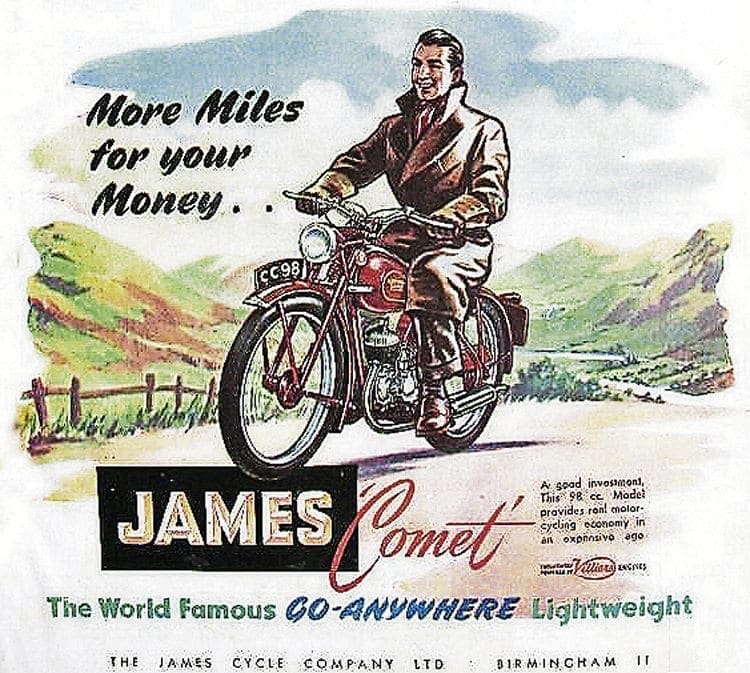This could be useful to readers who, like me, own a James Comet or one of its many guises from the early Fifties.
Mine dates from 1952 and has a two-speed hand change lever situated adjacent to the twist grip throttle, no decompressor, no ignition cut-out, therefore no reliable tickover, and the engine is shut down by closing the throttle which gradually dies as a result.

This arrangement was all fine and dandy back in the day, when traffic was light, but in today’s congestion it is quite something to approach a junction or lights and flick the lever into neutral whilst juggling with the twistgrip to prevent the engine from dying! This process has to be repeated when all is clear, resulting in an awful clashing of gear engagement due to over-revving the plot sufficiently to keep the engine alive.
To cure this condition a regular and steady tickover had to be found. Solution – re-wire the flywheel mag to bring the condenser to the outside and attach to the frame. A Mini (as in Leyland Mini car, not as in small) item was found to be perfect. Next, break into this circuit and connect a cheap two wire cut-out, mine was about £5 on eBay.
Finally, the carburettor slide has to be modified by raising it up in the body as no throttle adjustment screw is present in the little Villiers instrument. This was achieved by drilling a 2mm diameter hole in the base of the brass slide, inserting a dowel and soldering it in place so it’s secure, and then experimenting by filing it down to produce a very small gap between the slide and the base of the carb.
I found that a protrusion of 0.030” gave a steady idling engine speed. It is amazing that so small a lift to the slide has this effect on the bike which is now easy to manage no matter what heavy traffic I come across. Oh, and the other benefit is that with the engine now being stopped electrically, it has a crankcase full of gas for the next restart. It’s a win win all round! Other Comets may require a slightly different projection to give the best results, but the way forward is there.
Roger Walker





